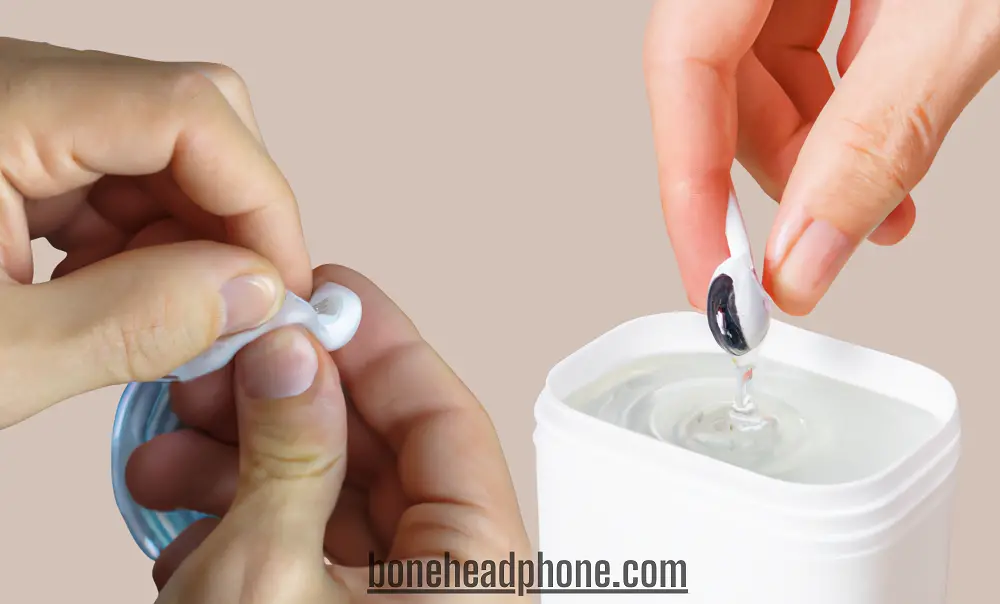AirPods are a popular choice for wireless headphones due to their comfort and ease of use. However, many users wonder if their AirPods are waterproof and what to do if they accidentally get water inside. It’s important to note that while AirPods are water-resistant, they are not entirely waterproof.
If you find yourself in a situation where you need to get water out of your earbuds, there are some steps you can take to try and save them. In this article, we’ll explore how to get water out of your water-resistant earbuds and headphones.
Water-resistant earbuds are a popular choice for those who want a comfortable, easy-to-use wireless headphones. However, if you accidentally get water inside your AirPods, it can be challenging to get it out. To help prevent water damage, knowing how to get water out of your AirPods if necessary is essential.
In this article, we’ll provide tips and tricks to get water out of your water-resistant AirPods, so you can continue enjoying your music. We’ve got you covered if you’ve gotten water in your AirPods from rain or a spill. With our tips, you’ll learn how to get water out of your water-resistant AirPods and keep them working correctly.
Are AirPods Waterproof?
As mentioned earlier, AirPods are water-resistant but not waterproof. This means that while they can handle some exposure to moisture, they are not designed to be completely immersed in water. It’s always a good idea to take precautions to keep your AirPods safe from water damage, such as keeping them in a protective case or avoiding exposing them to moisture.
Does Apple Care Cover Water Damage?
Another question that may come to your mind is whether Apple Care covers water damage. The answer is that it depends on the type of Apple Care coverage you have. The standard Apple Care coverage does not cover water damage, but Apple Care+ does.
If you have Apple Care+, you can file a claim for water damage to your AirPods or headphones, and they will be repaired or replaced as long as the water damage is not caused by intentional misuse or abuse.
However, it’s important to note that the coverage for water damage under Apple Care+ is limited to two incidents. You will no longer be covered if you file more than two claims for water damage.
To file a claim for water damage under Apple Care+, you must bring your device to an Apple Store or an authorized service provider for a diagnostic test. If the diagnostic test shows that the water damage is covered under your Apple Care+ plan, your device will be repaired or replaced.
What Causes Water to Get Into AirPods?
Water can get into AirPods in many ways, including rain, sweat, and accidental spills. If you’re using your AirPods while exercising, you must ensure they’re kept dry. Even if you’re careful, water can still find its way into the tiny crevices of the device.
There are several reasons why water may get into your AirPods:
- Sweat: If you use your AirPods during physical activity, such as running or working out, the effort can get into the earpieces.
- Rain: If you are caught in the rain while wearing your AirPods, the water can get into the earpieces through the open ports.
- Humidity: If you are in a humid environment, the moisture in the air can get into the earpieces through the open ports.
- Swimming or showering: Water can quickly get into the earpieces if you use your AirPods while swimming or showering.
- Cleaning: If you are cleaning your AirPods and accidentally get water inside the earpieces, it can cause them to malfunction.
The AirPods are not waterproof and should not be submerged in water. If water gets into your AirPods, you should dry them as soon as possible to prevent damage. It’s also essential to follow the manufacturer’s instructions for cleaning and maintaining your AirPods to ensure they continue functioning correctly.
How to Dry Out AirPods Quickly
If your AirPods get wet, you’ll need to act quickly to dry them out. The best way to do this is to remove the earbuds from your ears, shake out any excess water, and then place them on a paper towel to absorb any remaining moisture. You should also ensure that the charging port is free of water.
Different Methods for Removing Water from AirPods
There are several methods for removing water from AirPods. Some of these methods are more effective than others, so knowing which ones to use is essential.
Using a Hair Dryer to Remove Water
One of the most effective ways to remove water from AirPods is to use a hair dryer. Set the hair dryer to its lowest setting, then hold it about 8 inches away from the AirPods. Move the dryer around the device, making sure to cover all of the openings and crevices. Do not place the dryer too close to the AirPods, as this could cause damage.
Using a Compressed Air Canister
Another option for removing water from AirPods is to use a compressed air canister. This device is designed to blow out compressed air, which can help remove any water from the tiny crevices of the device. Make sure to hold the canister at least 8 inches from the AirPods.
Using a Vacuum Cleaner
You can also use a vacuum cleaner to remove water from AirPods. Use the minor attachment on the vacuum cleaner, and ensure the suction is set to its lowest. Move the extension over the AirPods, making sure to cover all of the openings and crevices.
Using Silica Gel to Absorb Moisture
Silica gel is an excellent option for absorbing moisture from AirPods. Place the AirPods in a container with silica gel, and allow them to sit for 24 hours. The silica gel should drink any water from the AirPods.
Using Rice to Draw Out Moisture
Rice is another option for drawing out moisture from AirPods. Place the AirPods in a container of uncooked rice, and allow them to sit for 24 hours. The rice should draw out any water from the AirPods.
Tips to Keep Your AirPods Dry
There are several tips to help keep your AirPods dry. Store them in a dry place, such as a case or a bag. If you’re using your AirPods while exercising, keep them away from any moisture. If they do get wet, make sure to dry them out as soon as possible.
Here are some tips to help you keep your AirPods dry:
- Use a carrying case: Keep your AirPods in a carrying case when not in use. This will protect them from accidental exposure to water and other liquids.
- Avoid wearing them in the rain: If you know you will be caught, leave your AirPods at home or in your bag.
- Dry the AirPods before putting them in the case: If your AirPods get wet, dry them off before putting them back in the case.
- Use a waterproof cover: You can also use a waterproof cover to protect your AirPods from water.
- Avoid using them while swimming or showering: AirPods should not be used while swimming or showering.
- Clean your AirPods: Clean your AirPods regularly with a dry cloth to remove any dirt or sweat that could cause water to accumulate.
- Keep them away from humid areas: Avoid storing your AirPods in moist areas, such as bathrooms or kitchens, as the moisture in the air can damage them.
- Dry them thoroughly before using them: If your AirPods get wet, make sure to dry them thoroughly before using them to avoid any damage.
Following these tips can help keep your AirPods dry and functioning correctly. If your AirPods do get wet, it’s essential to dry them off as soon as possible to prevent damage.
Avoiding Water Damage to AirPods
The best way to avoid water damage to your AirPods is to keep them away from moisture. If you’re using them while exercising or in other wet conditions, keep them away from water. Also, you should store them in a dry place when unused.
Cleaning and Maintaining AirPods
Cleaning and maintaining your AirPods is essential for keeping them in good condition. Use a soft, lint-free cloth to wipe them down, and avoid using harsh chemicals or abrasive materials. Additionally, make sure to keep the charging port free of any debris or dirt.
Troubleshooting Water-Damaged AirPods
If your AirPods have been damaged by water, there are several troubleshooting steps you can take. Try using a hair dryer, compressed air canister, or vacuum cleaner to remove any water from the device. You can also try using silica gel or rice to remove moisture. You may contact Apple for further assistance if none of these methods work.





